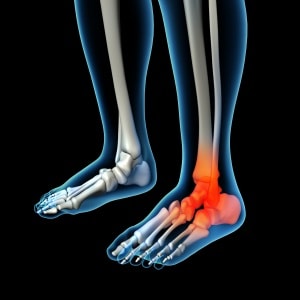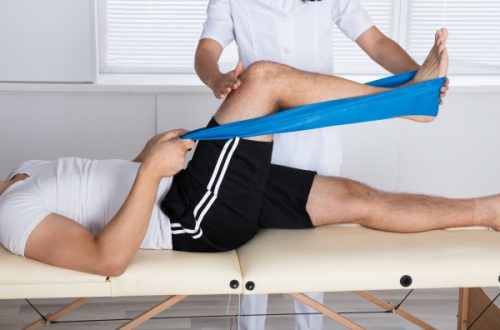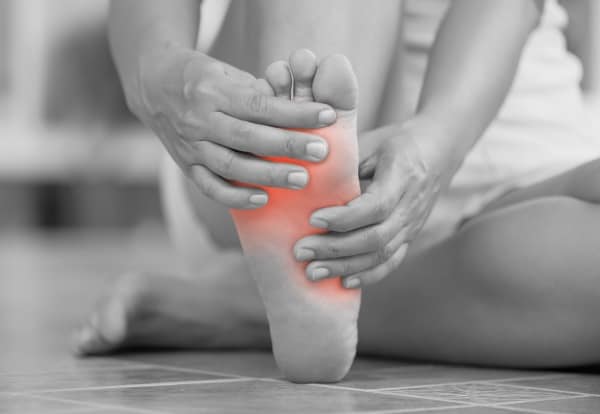Plantar Fasciitis is a debilitating foot condition that brings pain and misery to about 10% of the population at some time during their life.
As this statistic shows, you have a high chance of being one of those poor sufferers.
There is much conflicting advice on the internet as to what is the best course of treatment for the condition, but that doesn’t mean that the information is incorrect. We are complex beings, and everyone will respond better or worse to certain treatment methods.
However, no matter which course of action you follow, there is one main element of the treatment that you have to address if you wish to have a faster recovery.
So how do you recover faster from plantar fasciitis?
To ensure faster plantar fasciitis recovery, it is essential that you take steps to prevent re-injury of the partially healed plantar fascia tissue. Adopting a daily routine that strengthens the weakened tissue, without causing further damage, will result in a much quicker recovery time.
The following article will explain:
- Why your plantar fasciitis may not be getting better
- How to prevent continuous re-injury to the plantar fascia tissue
- How a simple daily routine can produce a faster plantar fasciitis recovery
- What type of exercise you should be doing
- When to do the exercises for maximum effect and quicker recovery.
Text written in RED is clickable links to supportive articles within our site.

Why Your Plantar Fasciitis May Not Be Getting Better
If you have been suffering with plantar fasciitis for some time, and have been following a treatment routine of stretching exercises, massage, ice therapy and rest, you may wonder why your condition is not improving at the speed you had hoped.
Many patients are diligent in their commitment to following their treatment plan, but remain disheartened due to the lack of progress, or indeed, a worsening of the condition.
This can usually be narrowed down to one cause – Repeat Injury / Re-Injury
What causes Re-Injury?
When we go to sleep, or rest for a long period of time, it gives our body the chance to heal any illness or injuries that we may have.
In the case of Plantar Fasciitis, it means that the minute tears to the plantar fascia tissue begin to heal and close up. This is the bodies natural healing process.
Obviously, the damage will take longer to heal than the time we can give in one rest period and so by the time we need to be on the move again, the injury is only partially healed.
If you apply your full body weight to your injured foot, without prior preparation, you risk splitting open the partially healed tears and undoing all the recovery progress, or even making the damage worse.
For some people, talk of plantar fasciitis and plantar fascia’s may see a bit overwhelming, or confusing medical jargon. So let’s look at it in a more everyday situation, like a cut finger.
If you have had a cut on your finger, you will probably of had the frustration of it starting to close up, only to split open again when you have bent your finger and stretched open the cut again. After time, the cut begins to close up again, only this time you are mindful to take care not to split it open again.
Well plantar fasciitis is very much like that. Imagine a cut in your plantar fascia tissue that has started to close up and heal. You then stand and apply weight to the foot, causing the plantar fascia to stretch and rip open the partially healed cut. It’s exactly the same principle as the cut on your finger.
Unfortunately, unlike the cut on your finger, the damage is within the foot and out of sight. This means that you are not so mindful of it until you get that sharp pain when you stand, by which time it is too late as the damage has been done and your recovery is set back to the start once again.
It is this constant re-injury that must be prevented if you are to recover quickly from your condition.

How To Prevent Re-injury
Preventing re-injury is a fairly straightforward process, however it does take commitment and perseverance.
As mentioned previously, when we stand and apply our bodyweight to the foot, the plantar fascia is abruptly stretched to capacity.
In a healthy foot, this is not a problem,as that is the function of the plantar fascia.
However, if there is damage to the plantar fascia that has begun healing, this action will cause the damage to re-occur, or possibly worsen.
To prevent this from happening, you will have to adopt a routine of gentle stretching exercises. These simple exercises will allow you to gently stretch the plantar facia tissue and prepare it to take your weight without, undoing all the healing progress that has taken place.
It is absolutely essential that you perform these gentle exercises every time you wake from sleep, or after any period of rest that has lasted more than an hour. Every Time. Period!
It will only take one time for you to forget, or not bother to do the exercises, to put you right back to the start of your recovery.
These exercises we will show you to do should take no more than 5 minutes of your time, and will save you a great deal of pain and recovery, if you will just commit to ensuring you do them without fail after every rest period.
5 Minute Plantar Fascia Stretching Routine
By doing the following simple stretching exercises after every period of rest that lasts over an hour, you will dramatically reduce the time it will take to cure your plantar fasciitis.
You do not need any fancy equipment to do theses stretches, and they can be performed on the bed, in the office, in your living room, anywhere.
The main focus of these stretches is to prepare the plantar fascia tissue so that it can bear your body weight without further damage, and prevent undoing the healing that will have taken place while you rested.
The 4 exercise you will do are:
- The Alphabet Ankle Rotation
- Toe Curl Extensions
- Arch Stretch & Massage
- Towel Stretches
To prevent duplicate content on our site, you can see how to perform these stretches and the duration required for each are shown on our page: 5 Minute Plantar Fasciitis Stretching Routine

Important Note!
You must be sure to perform the stretching routine after every period of rest.
The whole purpose of the routine is to gently stretch and prepare the plantar fascia prior to placing your body weight onto the foot.
If you stand, even once, without having first done these stretches, you take the risk of damaging the plantar fascia and putting your recovery back to the start.
Also, this stretching routine is to be performed in conjuction with your existing recommended treatment plans, not in place of. You should continue to :
- Rest
- Apply Ice or Heat Therapy
- Anti Inflammatory Medication (if advised)
- Foot Orthotics (if advised)
- Massage
Address The Cause of Your Plantar Fasciitis
If you are to have any success in making a full and permanent recovery from your plantar fasciitis condition, it is not enough to simply heal the existing damage.
If you have not looked into what caused you to suffer from the condition in the first place, you will continue to do battle with it.
Here is a list of some of the most common causes of Plantar Fasciitis.
- Wearing Unsupportive or Worn Out Footwear
- Working or Standing On Your Feet For Long Periods
- Being Overweight
- Fallen or High Arches
- Playing High Impact Sports
- Pregnancy
If you identify with any of these causes, where possible, do what you can to prevent their impact on your life.
This will speed up your recovery and help ensure that you do not suffer from the condition again in the future.





